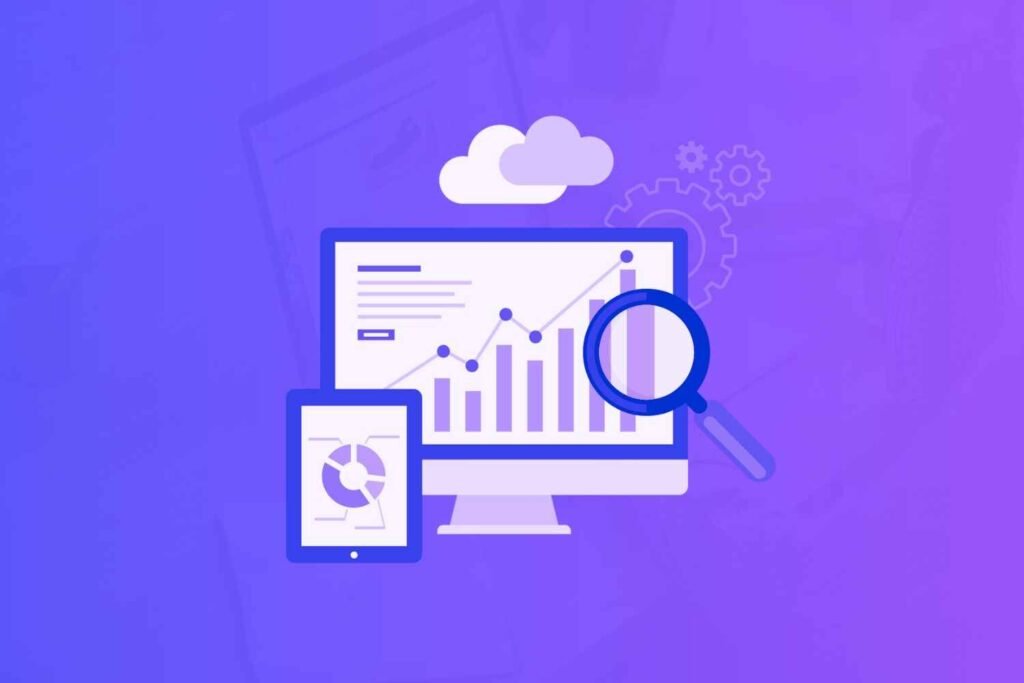More than 4 billion people use social media on a monthly basis. No wonder it’s so essential to build your online presence.
But managing your presence on different platforms manually is a lot of hard work. The smart way is to use social media automation software, such as Buffer.
So if you’re considering it for your social media marketing needs, this buffer review will give you a detailed overview of its key features, pros, cons, and pricing. This way, you can easily decide whether it matches your requirements.
Disclaimer: If you buy any products through links on this site, I may earn a commission. But it doesn't make any difference to your cost, and it helps me keep this blog running. So you could always read my articles for free.
What is Buffer?
If you have been managing your social media accounts manually, you’d have surely felt this need. What if you could post, schedule, and analyze the performance of your social media marketing efforts from one unified location?
That one integrated space is Buffer. It’s an easy-to-use social media management platform that helps you schedule, publish, and analyze updates across multiple platforms.
That means you can post to several social networks, from Twitter to Instagram, from a single place. There is no need to switch between various tabs or screens.
And you can measure engagement with regard to how your social media content is performing.
You get access to some basic features for free. To go beyond that, you can upgrade to one of its paid plans.
The plans are organized in such a way that you’ll find something suitable for your needs, whether you’re a blogger, small business owner, or an agency professional.
In the next part of this Buffer review, let’s see how to use it.
How does Buffer work?
As I said before, Buffer is a really intuitive social media marketing tool, even for beginners. Here’s how you can quickly get it up and running.
Start the registration process
Your first step is to create a new account. You have the option to sign up for free or to try one of the premium plans for 14 days.
I’d recommend that you register with a 14-day trial to test out a paid plan. This way, you’ll get essential features such as Instagram and Pinterest scheduling.
Don’t worry. You won’t be charged if you forget to downgrade after 14 days. In fact, you don’t even need to add your credit card details when you go ahead with the trial period.
Set up social media channels
Now it’s time to enter your social media accounts. You have the option to connect channels such as LinkedIn, Facebook, Twitter, Pinterest, and Instagram.
It’s a good idea to connect all the social media networks you use. So you can check how Buffer works for each of them.
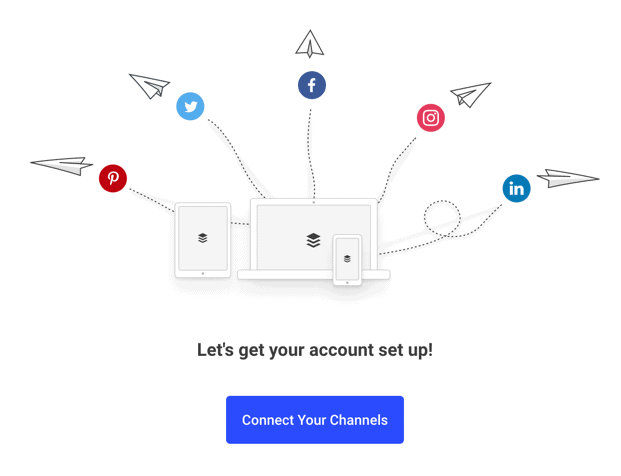
Once you have connected all your profiles, go to “Settings” for each network to create time slots as per your posting schedule.

You can pick different times for each day of the week. This can help you in many scenarios. For example, you may want to post more or less on weekends, depending on your target audience.
Schedule social media posts
Next, schedule your first social media update. This involves picking the social network, writing the content with hashtags, inserting links, and uploading images.

View performance analytics
Once your posts have had a chance to reach your target audience, you can head over to the analytics reports of each channel to check how your updates are performing.
You can view engagement metrics such as the number of likes, retweets, reach, clicks, shares, and comments.
Buffer key features
Buffer comes with plenty of valuable features. Let’s see the best ones as we go along with this Buffer review.
Schedule updates to multiple networks
Buffer lets you schedule posts to multiple social media networks.
Instagram: Schedule posts to Instagram business accounts (only if you have a paid plan). Posting stories directly is not possible. But you have the option to schedule them and get reminders accordingly.
Facebook: Buffer lets you add posts to Facebook pages as well as groups, but not profiles.
Twitter: Schedule posts to Twitter, along with hashtags and tags to other accounts.
LinkedIn: Post LinkedIn updates to profiles and pages.
Pinterest: Add pins to Pinterest. (only if you have a paid plan)
Calendar view
As the name suggests, the calendar view gives you a calendar-style snapshot of your previous, current, and future social media posts. This view makes it easy to visualize what you have scheduled and fill in the missing time slots.
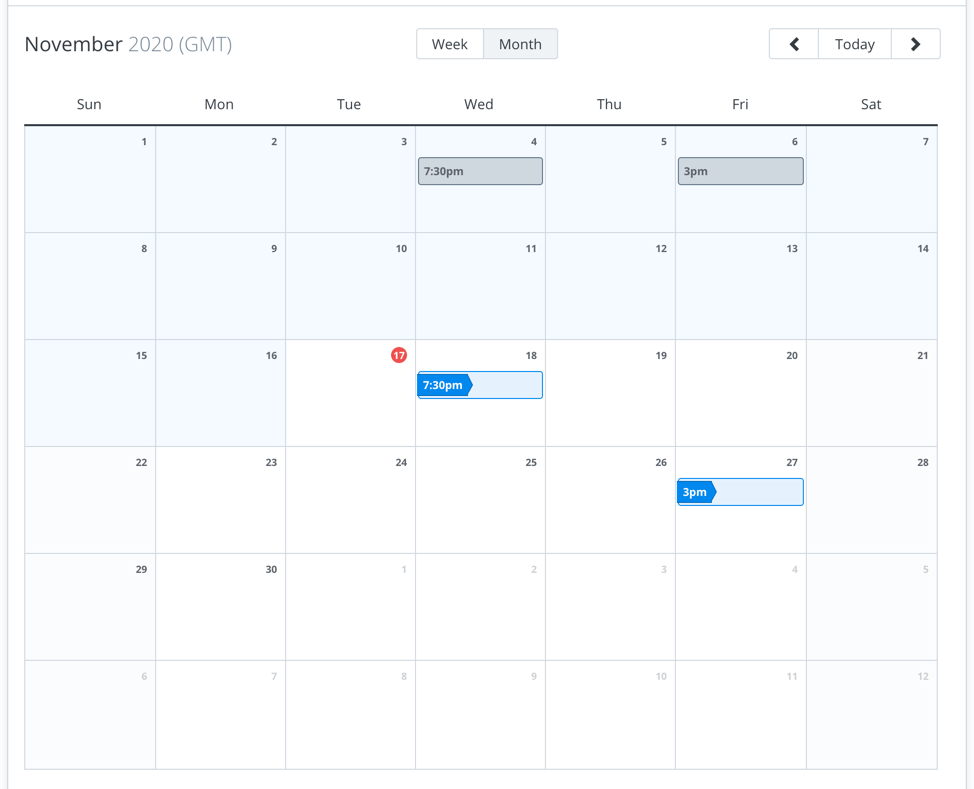
The best part? You can drag and drop social media posts from one-time slot to another.
Detailed analytics reporting
You get basic analytics reporting with Buffer’s publishing plans. But if you want more, Buffer also offers a service called Analyze.
It can examine several metrics such as audience demographics. It can tell you which types of content, such as videos, text, images, and links) engages your audience the most. Besides that, it can suggest the best times and frequencies to post social media content.
Pre-determined time slots
This feature allows people to set the time slots at which they want to make their posts live on social media. So when you are scheduling posts later, you won’t have to worry about choosing a specific time every time.
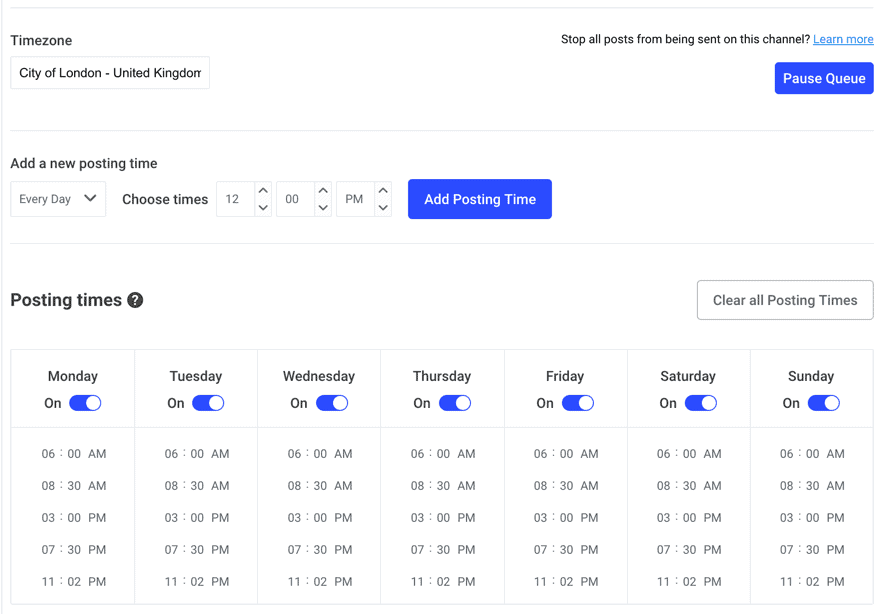
But you can deviate from these slots as well if that’s what you want when creating a specific post. Just pick a specific time for when you want your post to show up in your social media account.
AI assistant
Buffer’s AI Assistant assists with social media content creation. It can help you generate topics and optimize your existing content to ensure maximum engagement.
You can also tailor posts for multiple unique audiences, test several versions of an update, and create content in various languages.
Team management
Buffer has features that let social media teams collaborate in planning and posting content. For example, the Notes feature lets you post internal comments for team members.
You can also mark posts as drafts so that other team members can review them and share their feedback before they are published.
The managers can determine who has access to which social media channels and who has the authority to approve content.
Start page
Buffer’s Start Page offers an easy way to build a landing page. By consolidating all your content in one place, you make it easy for your audience to reach your social media profiles and communication tools like WhatsApp.
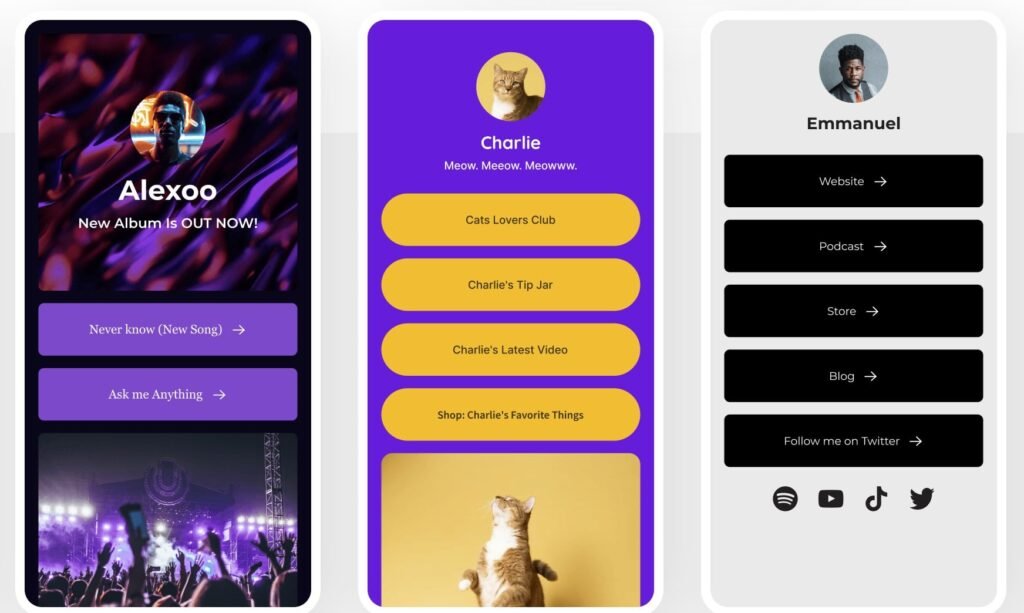
The flexible design options are suited for both new and established businesses. You can pick from readymade templates or build a custom page with links, products, articles, and videos. Plus, you can keep tabs on how your landing page is performing.
Integration with major platforms
Buffer has no shortage of useful integrations that allow you to connect the tool with third-party software that you already use. Some of them are:
- SharpSpring
- Instapaper
- Bulk.ly
- IFTTT
- Mention
- Quuu
- WordPress
For example, Buffer connects seamlessly with WordPress. This comes in handy when you want to schedule your WordPress blog posts through Buffer.
And there’s integration with Google Analytics if you want to connect your traffic metrics with social engagement metrics.
There’s also a Zapier integration. This means that you can connect Buffer with 400 more tools.
Buffer pros
A Buffer review is not complete without discussing its pros and cons. Here are the key benefits that make Buffer stand out from other social media management tools.
Customized pricing plans
Buffer has a flexible pricing model. The core product offerings have been kept separate from each other, such as Analyze and Publish. There are multiple plans within each product offering. So you can pick exactly what you want.
If you are short on budget, you can opt for the free plan, or the Pro plan within Publish. If not, you can consider a Business plan, along with one of the Analyze plans.
Simple user interface
This is Buffer’s biggest selling point. Buffer has relatively fewer features than other similar tools. This lets team Buffer maintain a neat interface that’s enjoyable and easy to use for everyone.
It’s so intuitive that you can start making the most of Buffer’s features within just a few moments of signing up. You don’t need to spend too much time going over the knowledge portal or conversing with customer service representatives.
Freemium business model
If social media marketing automation is new to you, or you just want to experiment with it, Buffer’s free plan is a very generous option for you. It lets you connect up to three social media platforms.
You can then schedule 10 posts for each social media channel. This goes a long way in reducing your risk.
Buffer cons
Making an informed decision requires being aware of the drawbacks of using Buffer. Let’s examine them one by one in this Buffer review.
Not an all-in-one tool
Unlike most other well-known competitors, Buffer is not a complete social media management solution. That means you’ll need additional tools to fill the gaps left by Buffer.
For example, Buffer lets you schedule posts and review analytics. But it doesn’t show you data such as incoming mentions. And it doesn’t let you reply to comments or engage with others’ content.
Buffer’s social listening features aren’t as comprehensive as other social media software such as Hootsuite or Zoho Social.
May not suit large enterprises
Buffer is not suited for bigger organizations as it’s missing some key features. For example, you can’t integrate it with a cloud storage solution such as Google Drive. Such an integration is crucial for content management.
Similarly, Buffer isn’t for those who want deep analytics reporting. It lacks the advanced analytics features you can easily find in competing tools such as Sprout Social and Hootsuite.
Expensive in the long term
As we discussed before, Buffer comes with flexible pricing plans. But the different costs can easily accumulate as you add more and more social media accounts.
So you should take your business needs into account and estimate your long-term expenses before you start using Buffer.
Buffer review: pricing
Buffer has multiple pricing options for a variety of users and user needs. And all the premium plans come with a free 14-day trial.
The free plan lets you add three different social media profiles and schedule a maximum of 10 posts. Other than basic publishing capabilities, you get features such as AI assistant and start page builder.
The Essentials plan is priced at $6/month per social network. It lets you publish as many posts as you want for that channel. Plus, you get extra planning, engagement, and engagement tracking capabilities.
The higher plan is the Team plan, which costs $12/month per social channel. This plan offers additional capabilities, such as the ability to add an unlimited number of team members to view and create social media content.
You also get to control which team members have what level of access and permissions.
Large organizations would prefer the Buffer Agency plan. You pay $120/month for managing a maximum of ten channels. If you want to add more channels, you pay an additional $6/month for each.
Wrapping up: is Buffer worth it?
As you can see in this Buffer review, Buffer is extremely valuable as a a centralized platform for managing your presence on several social media channels. It comes with a basic set of tools to publish, plan, and schedule social media posts.
However, it’s not for everyone. It’s a good choice for you in the following cases:
- You have a limited budget.
- You run a new small business and you just need the basics
- Simplicity and ease of use is the most important thing for you
On the other hand, you may not want to pick Buffer in the following circumstances:
- You run a large-scale operation
- You need a lot of integration to make Buffer work with your existing tools
- You need detailed analytics and in-depth reporting
So think about what you truly want from a social media automation platform. And make your decision accordingly.
Did I miss anything? Did you try Buffer? Do you have any questions or comments? Share your thoughts below in the comments section.



